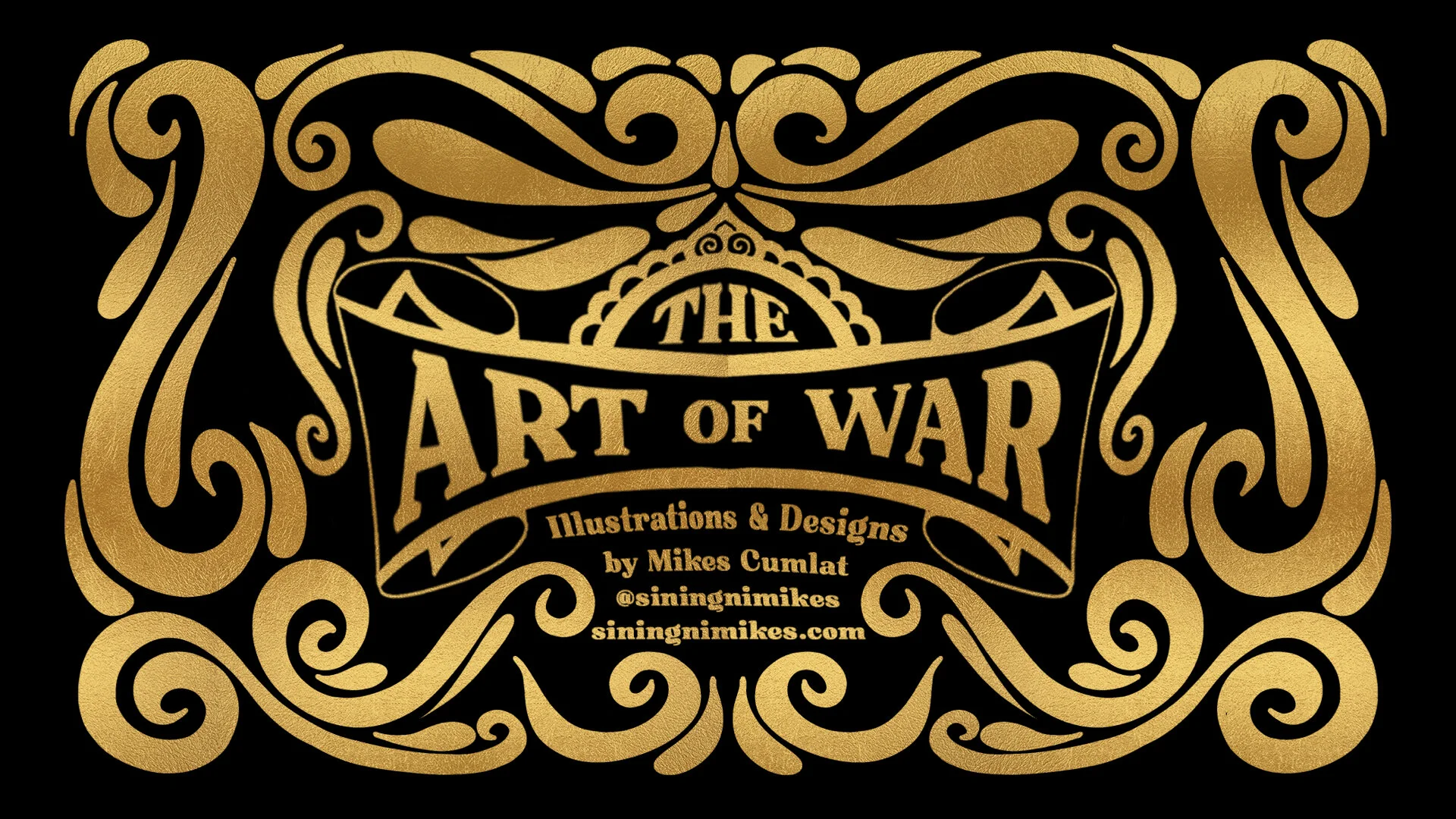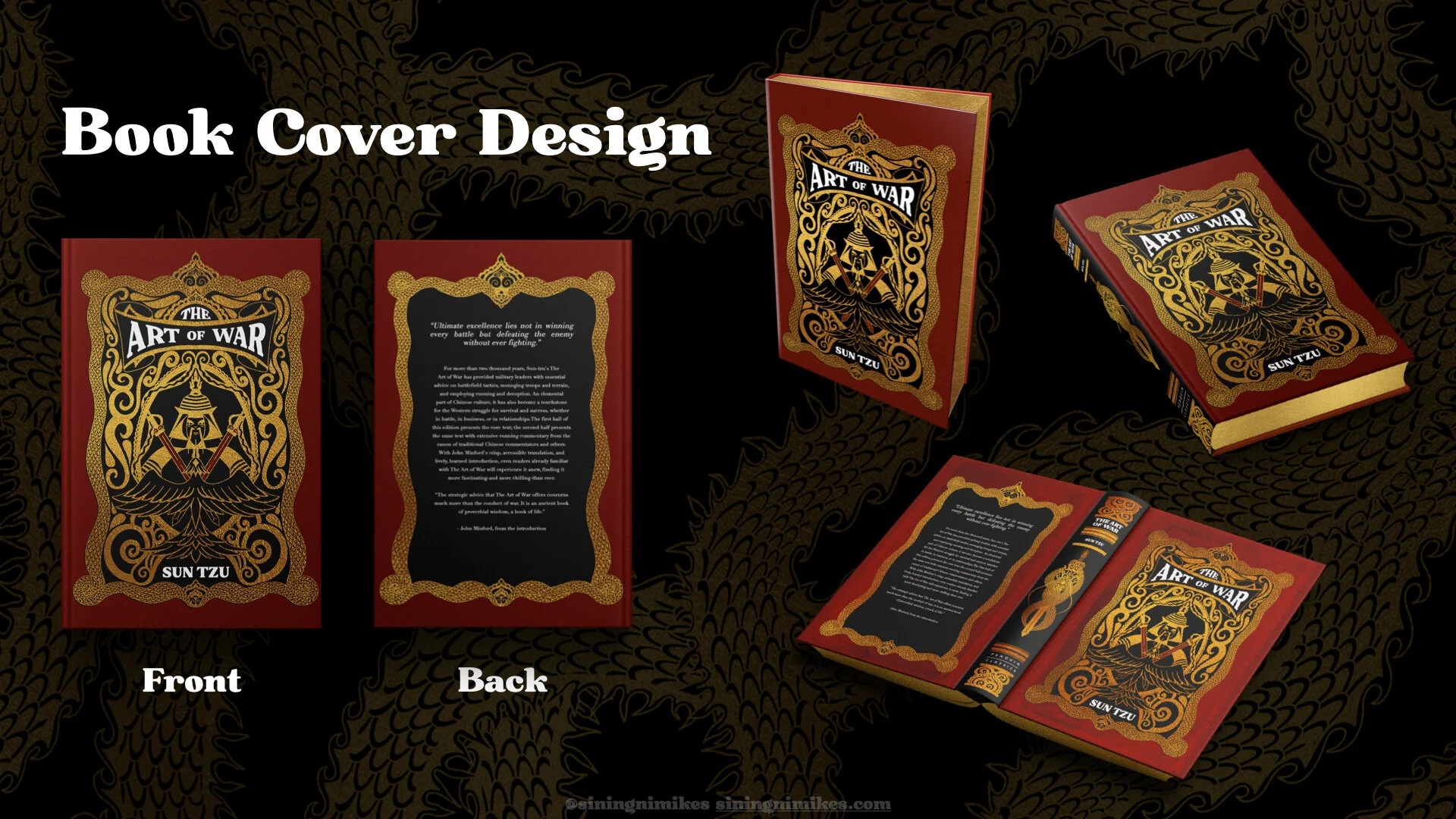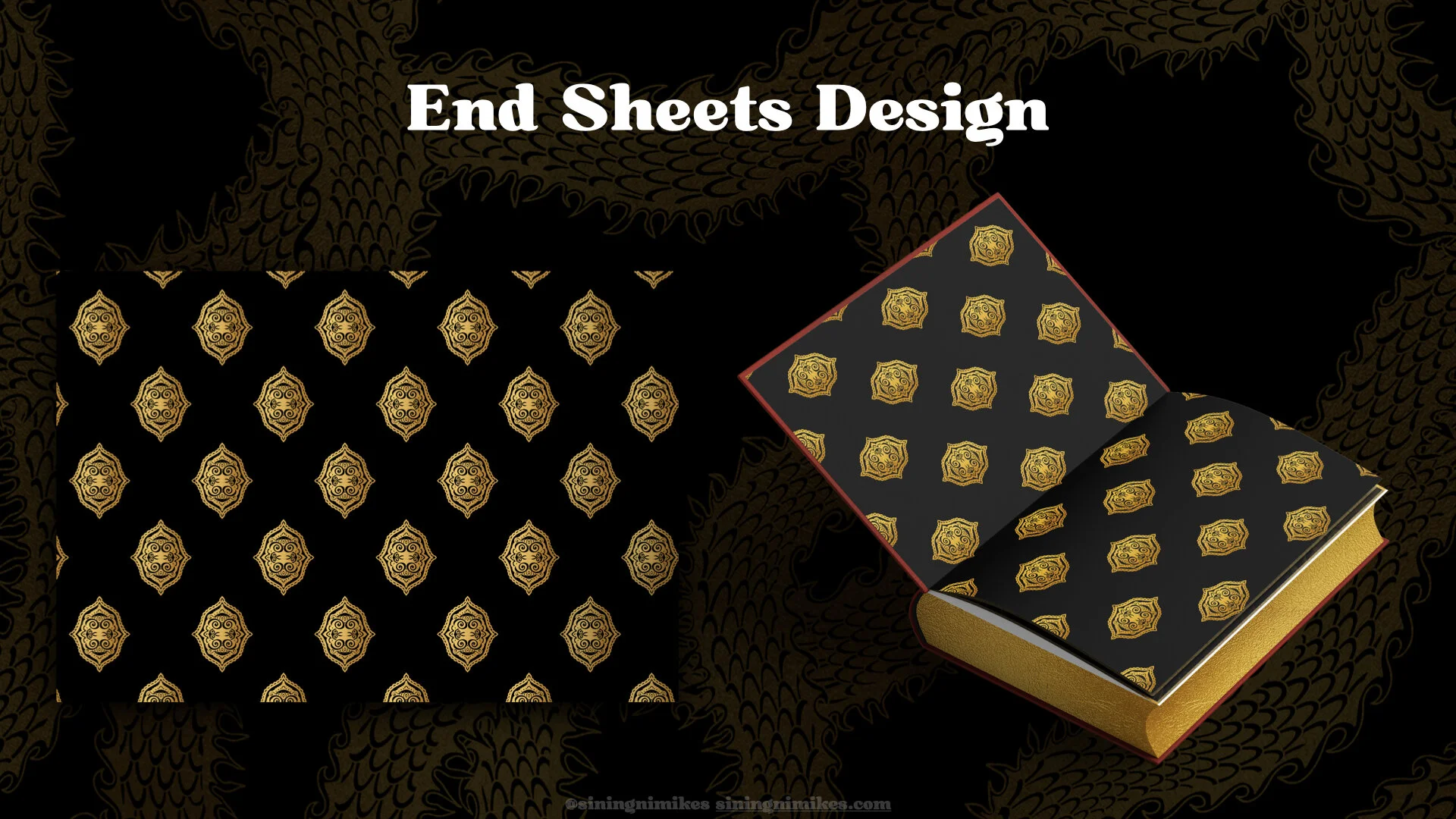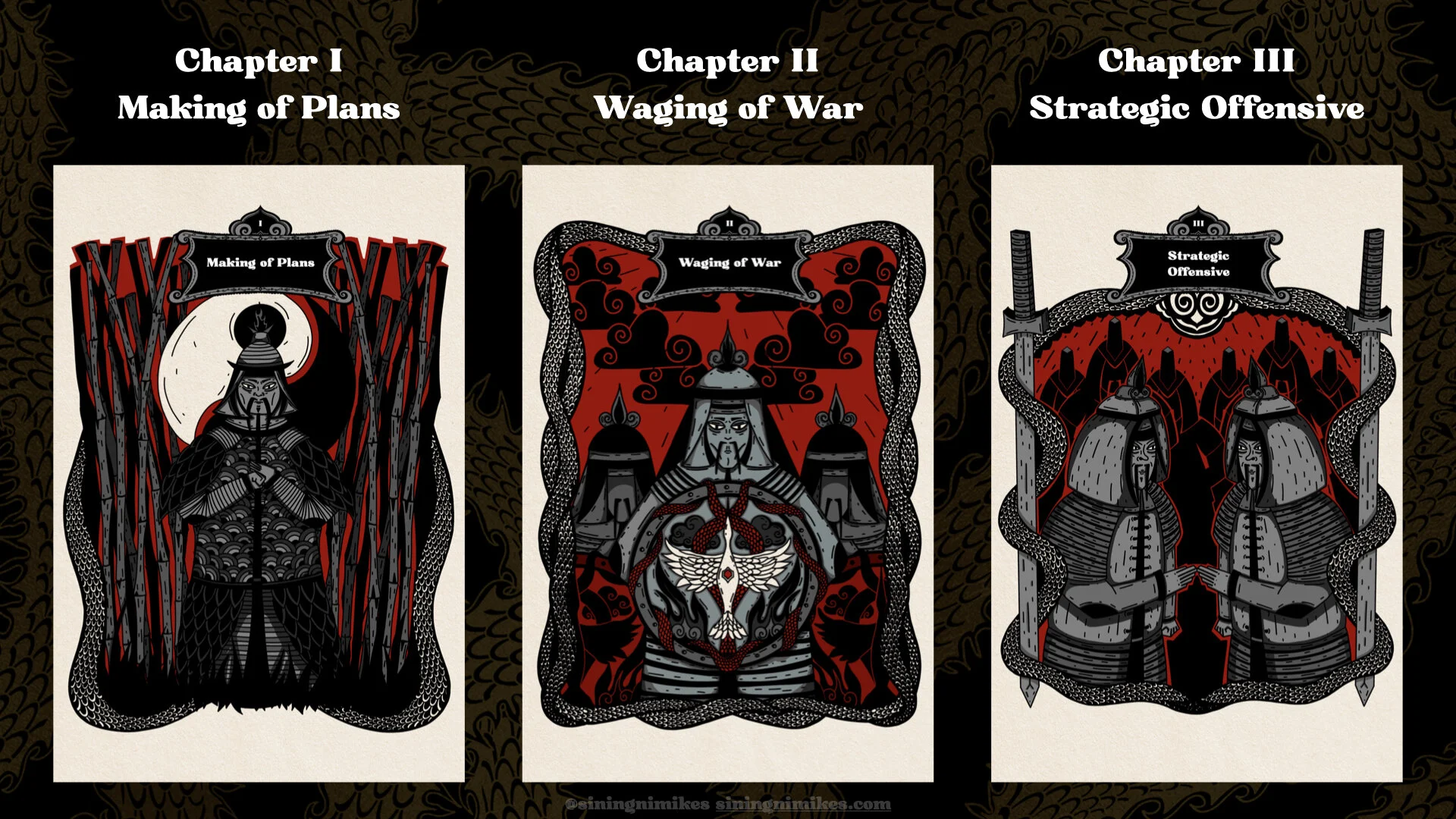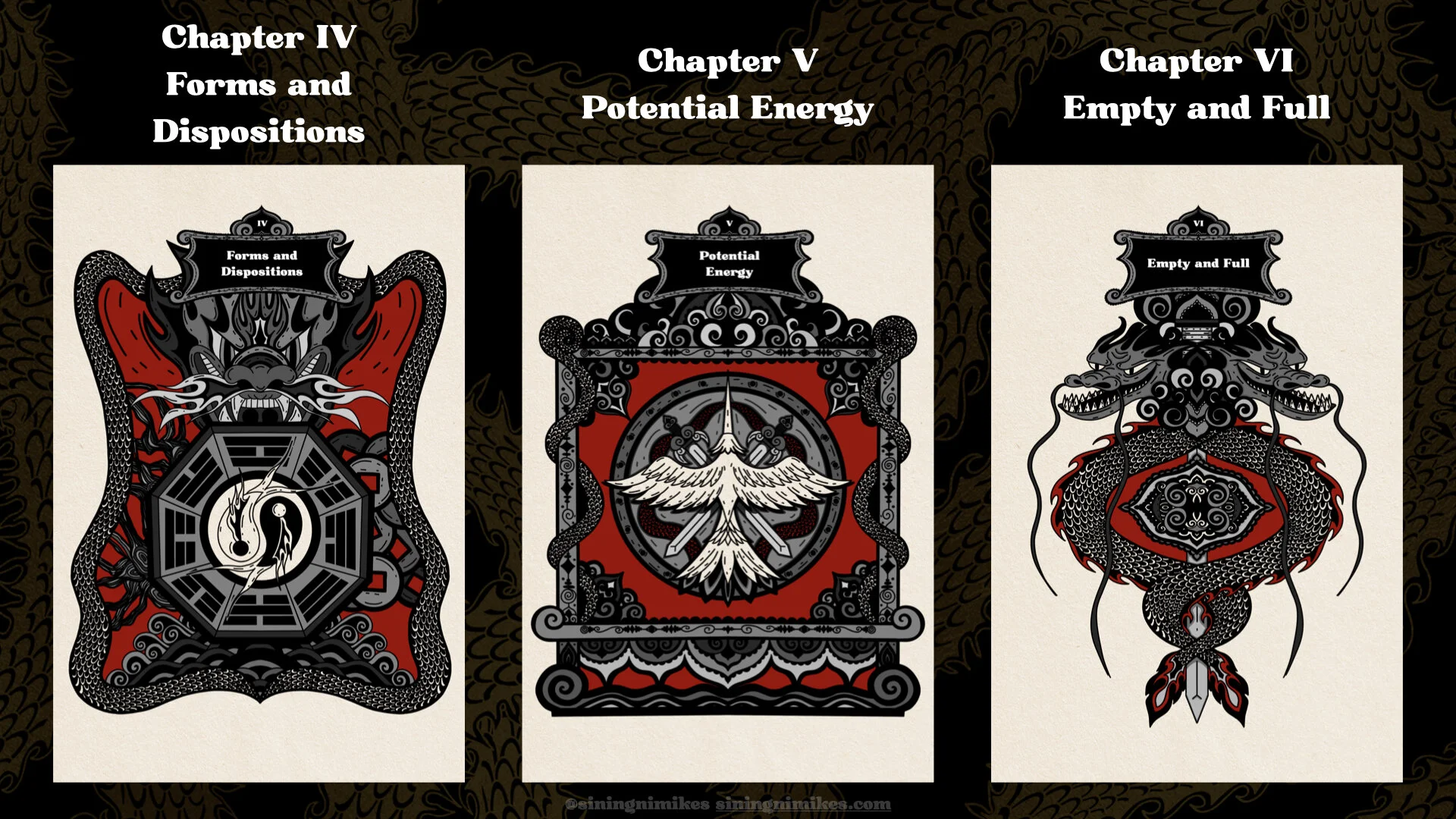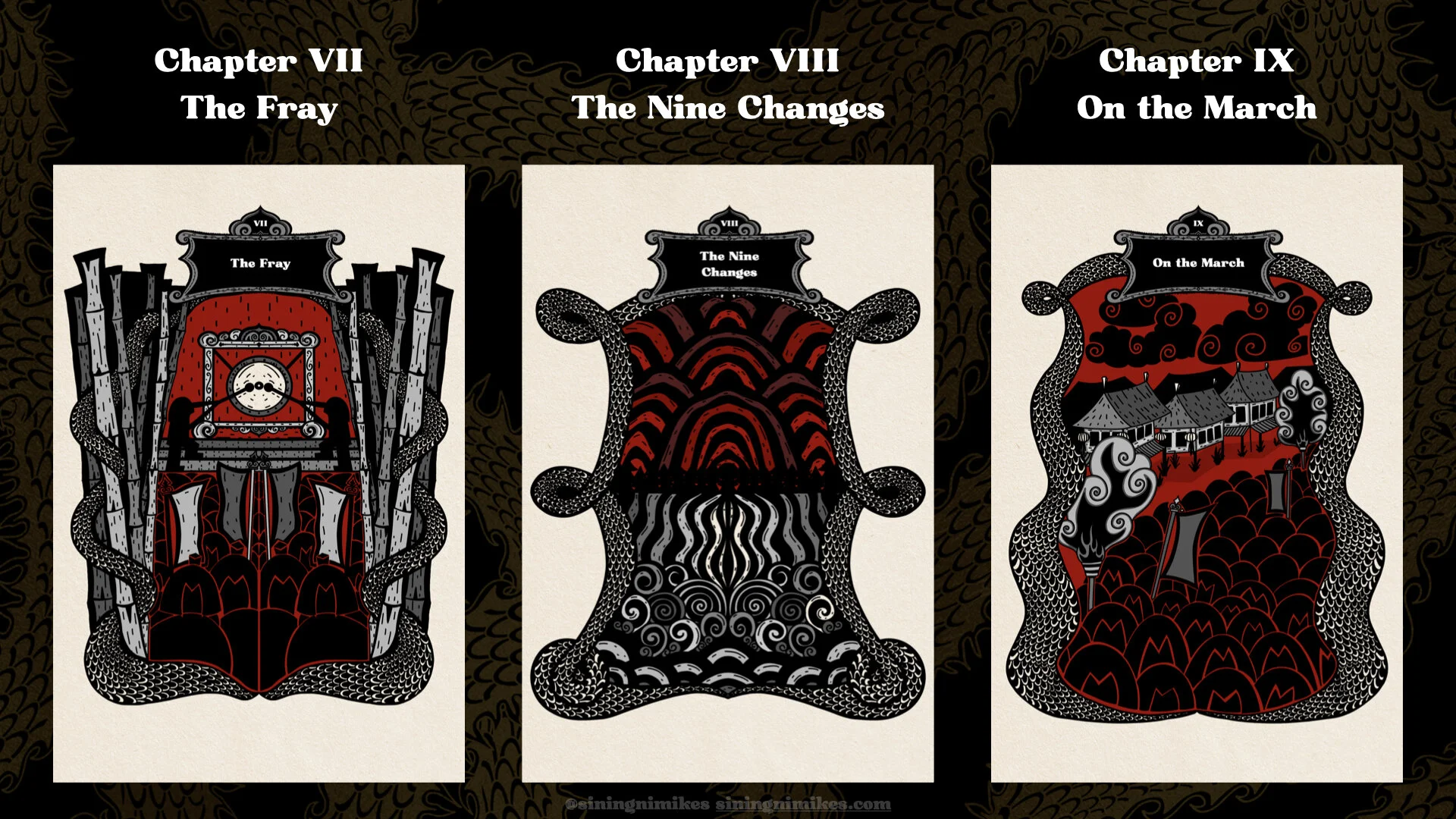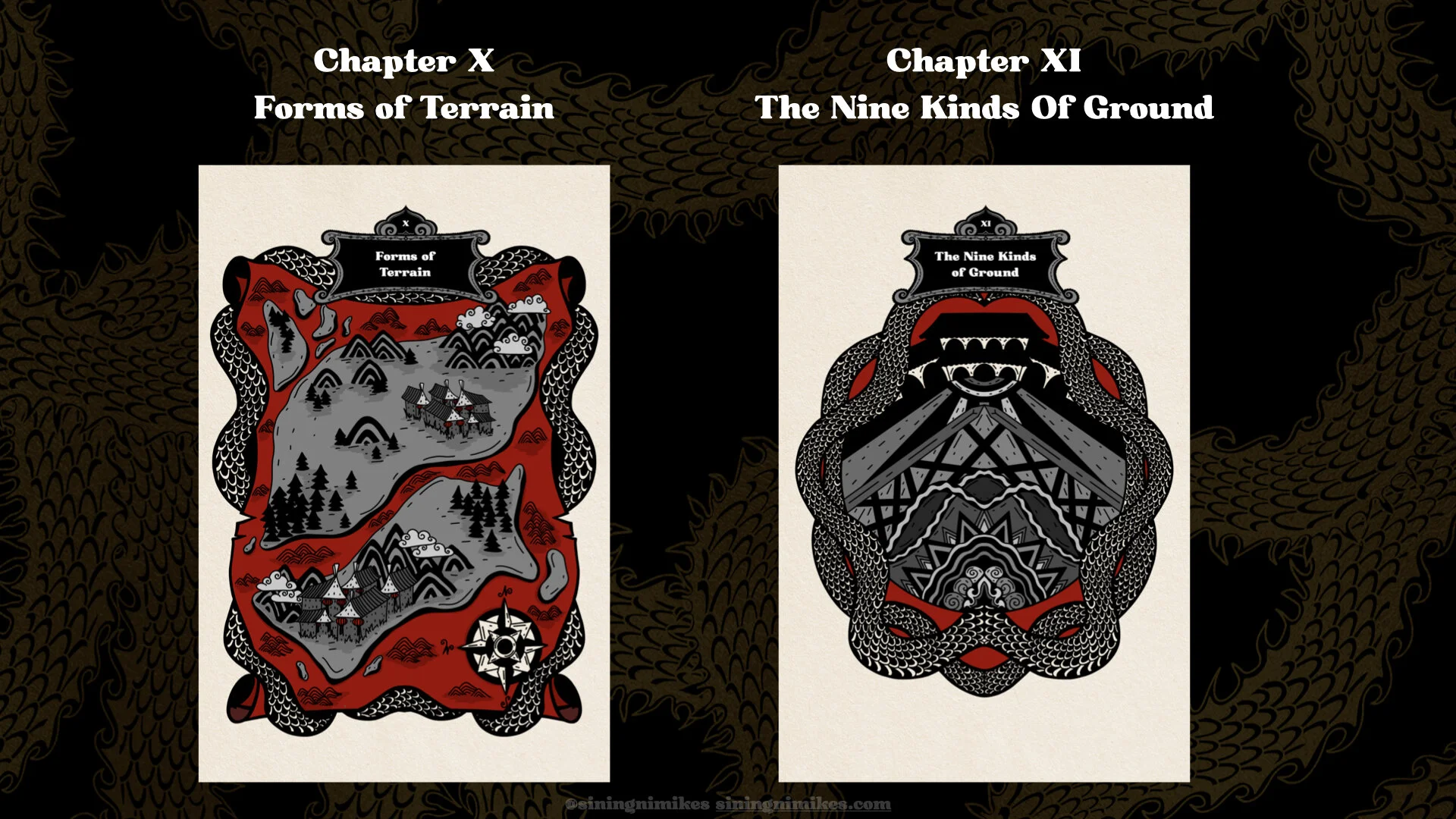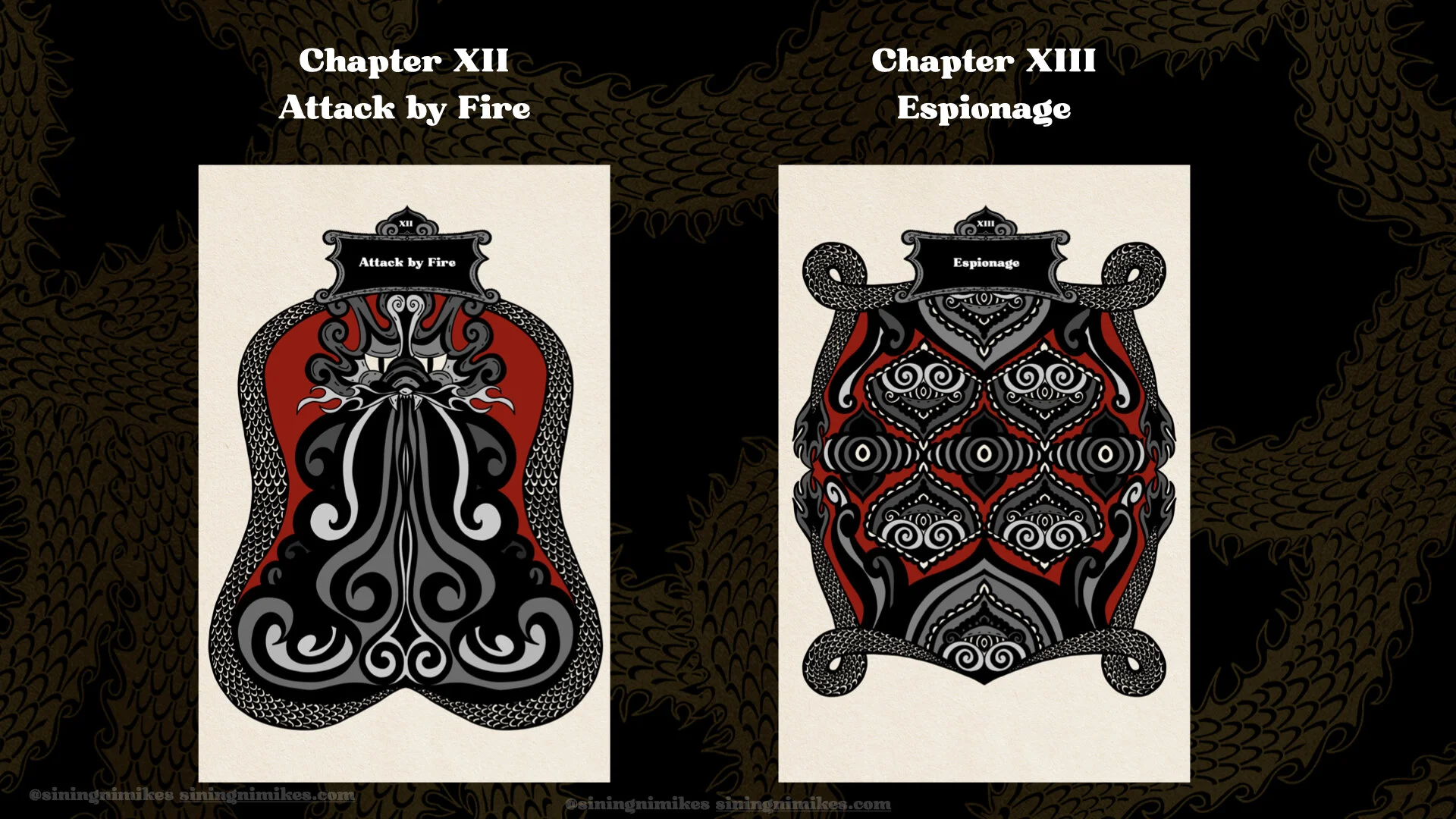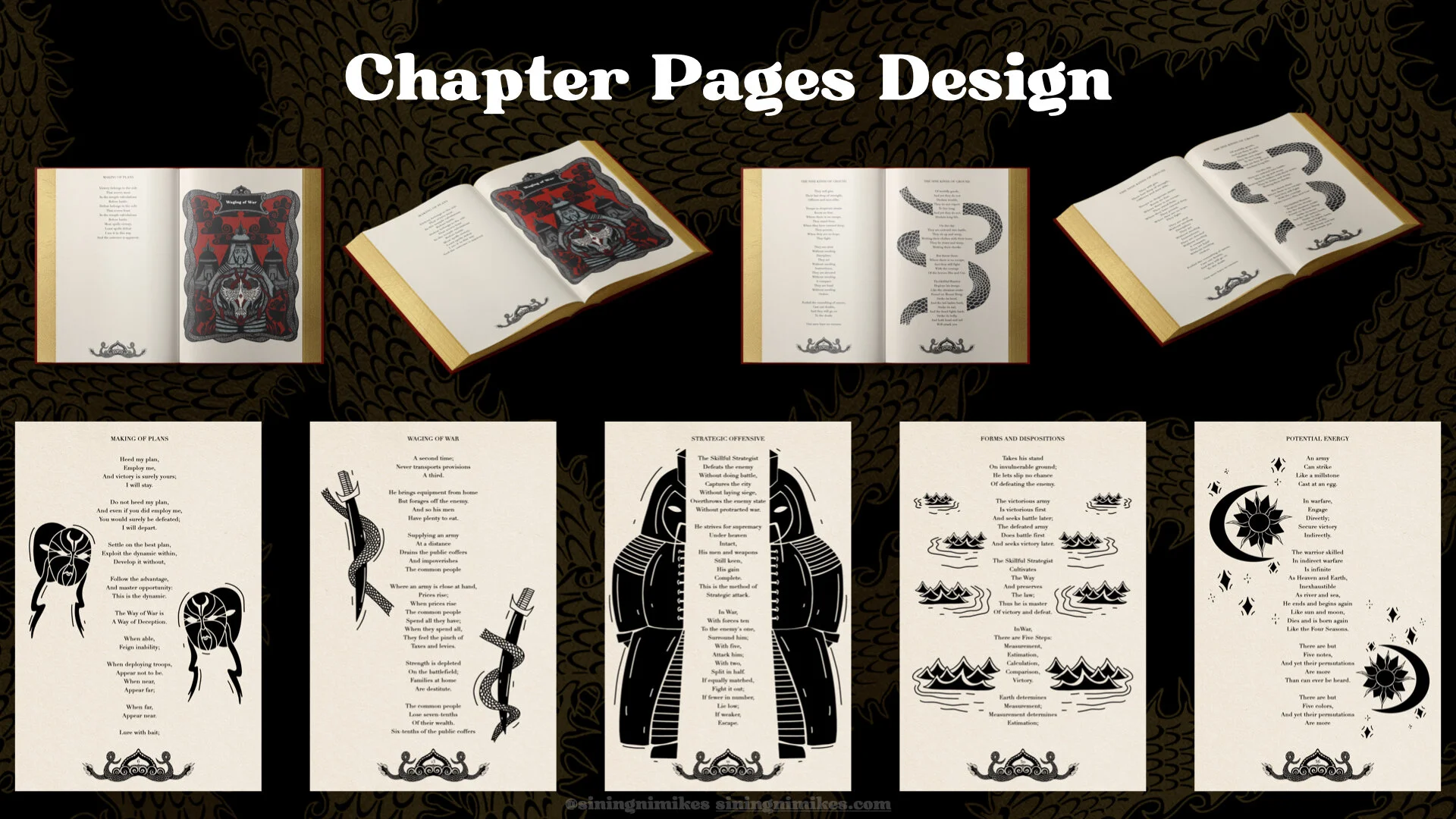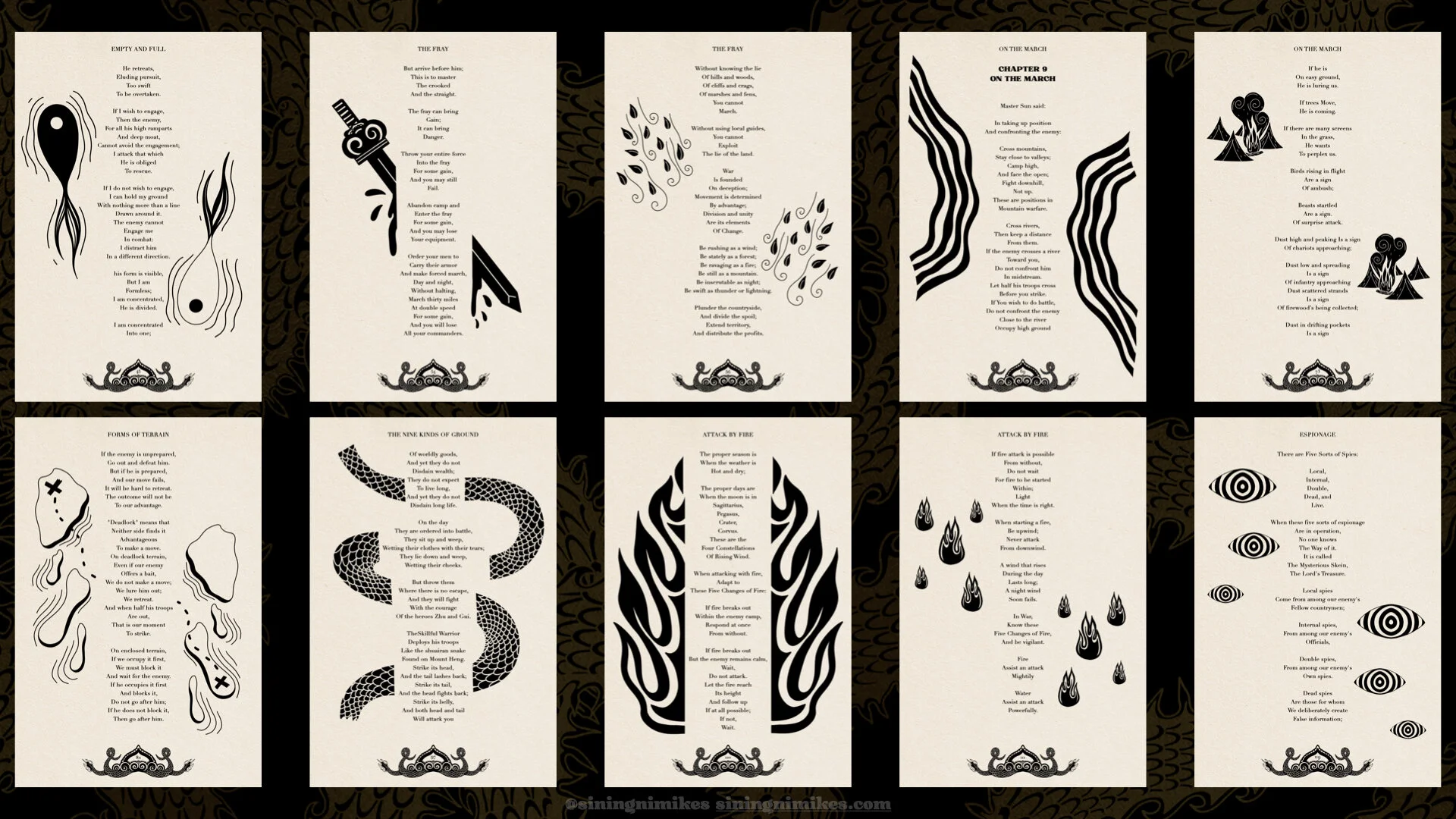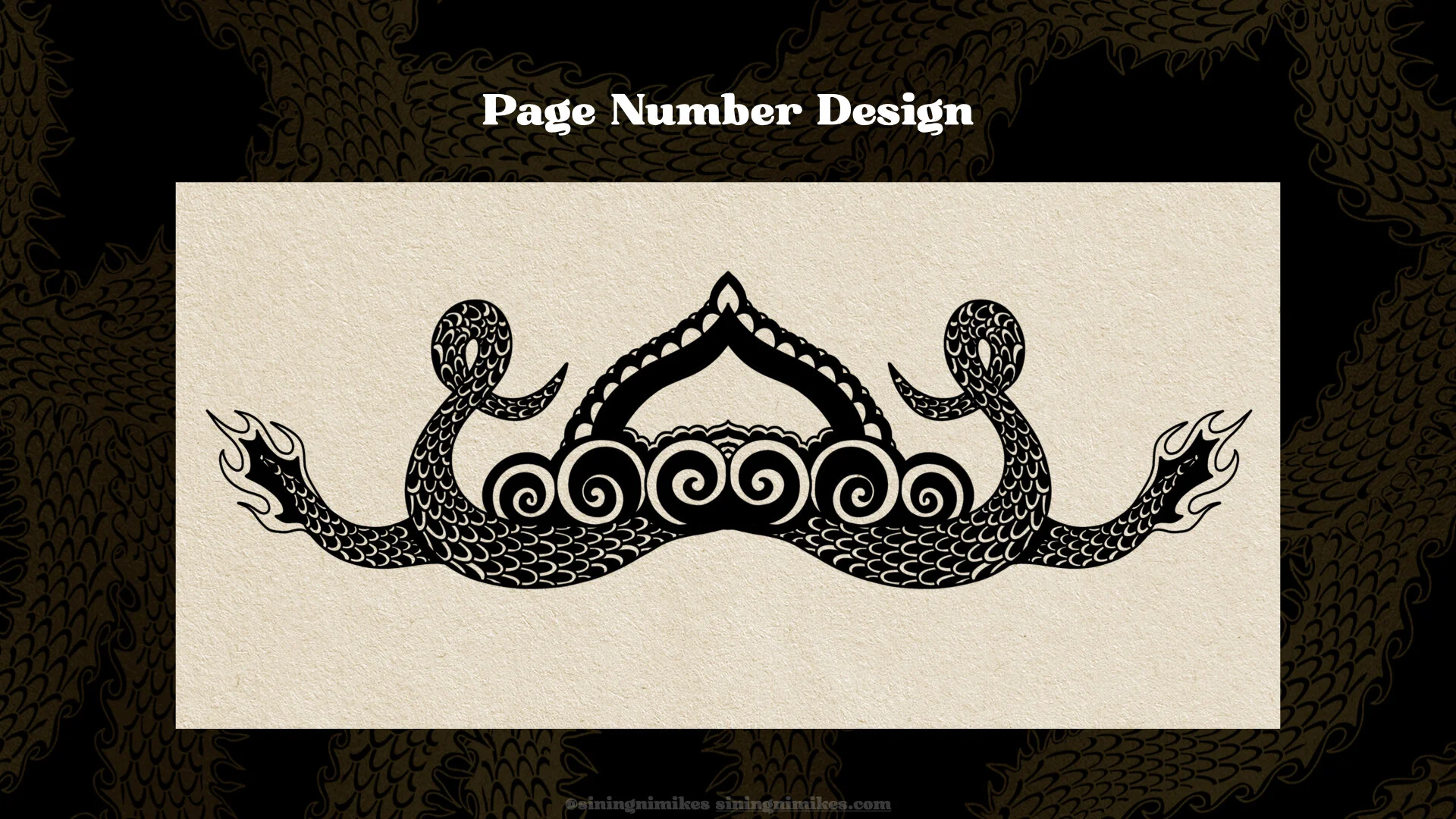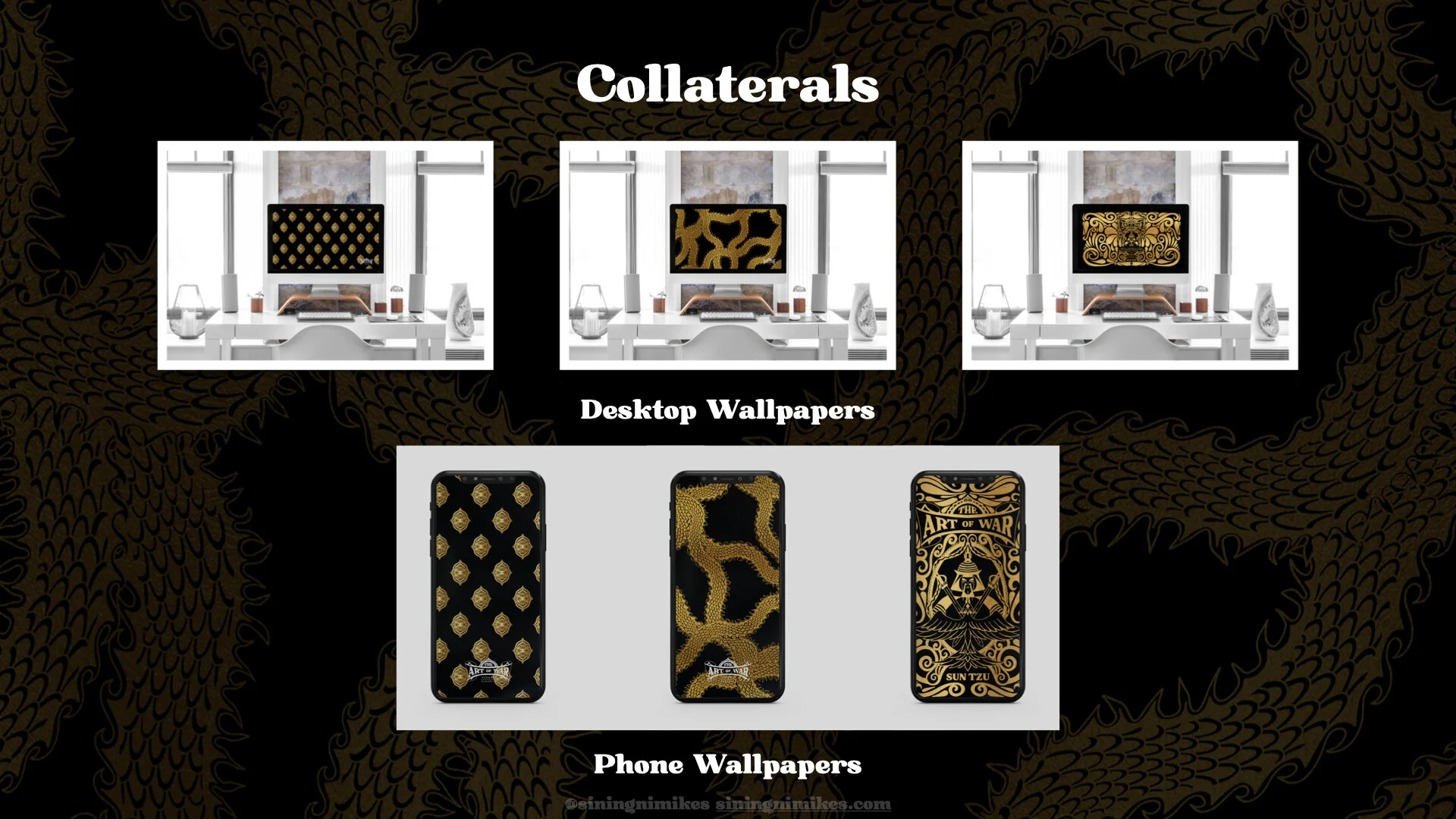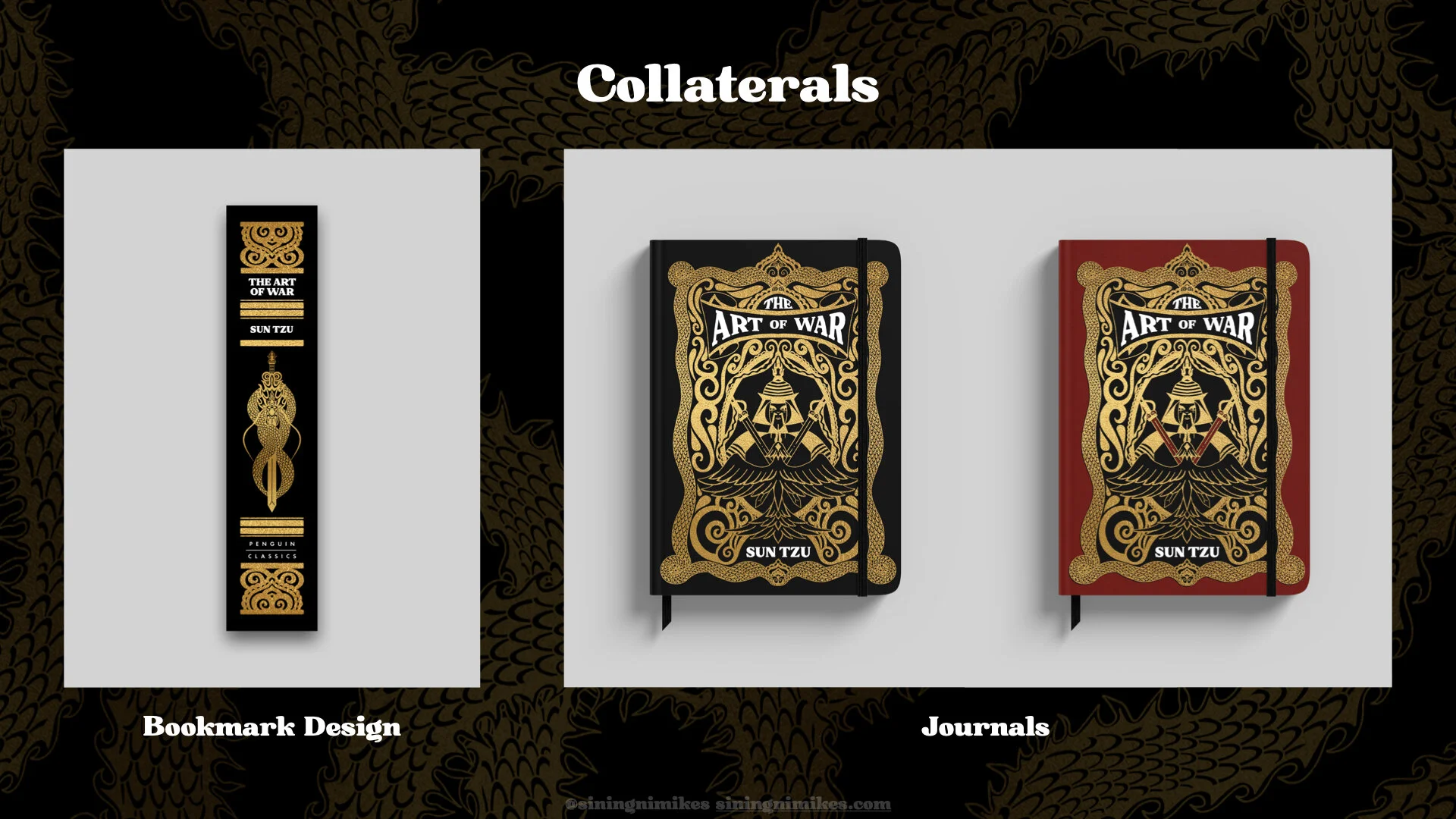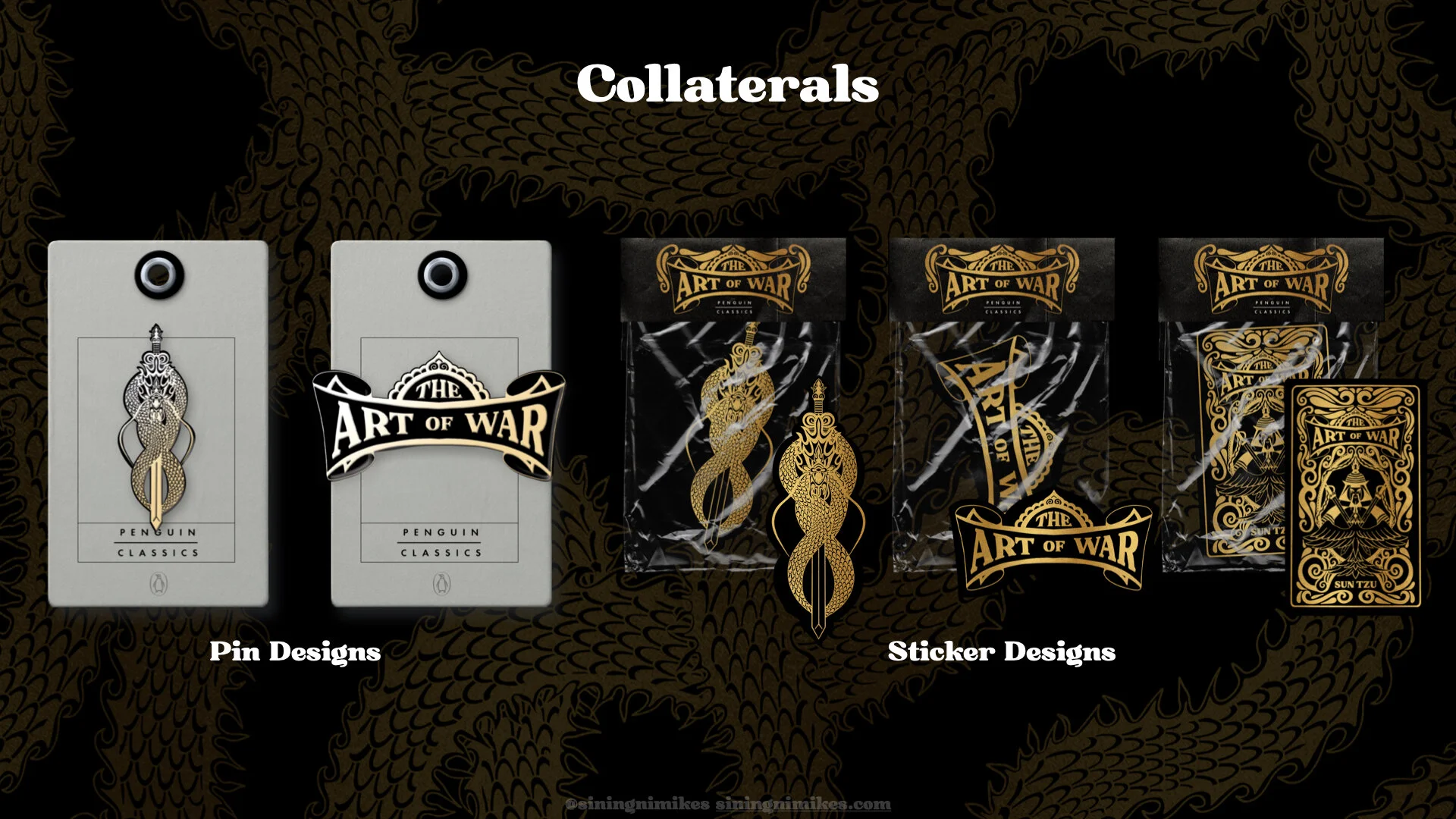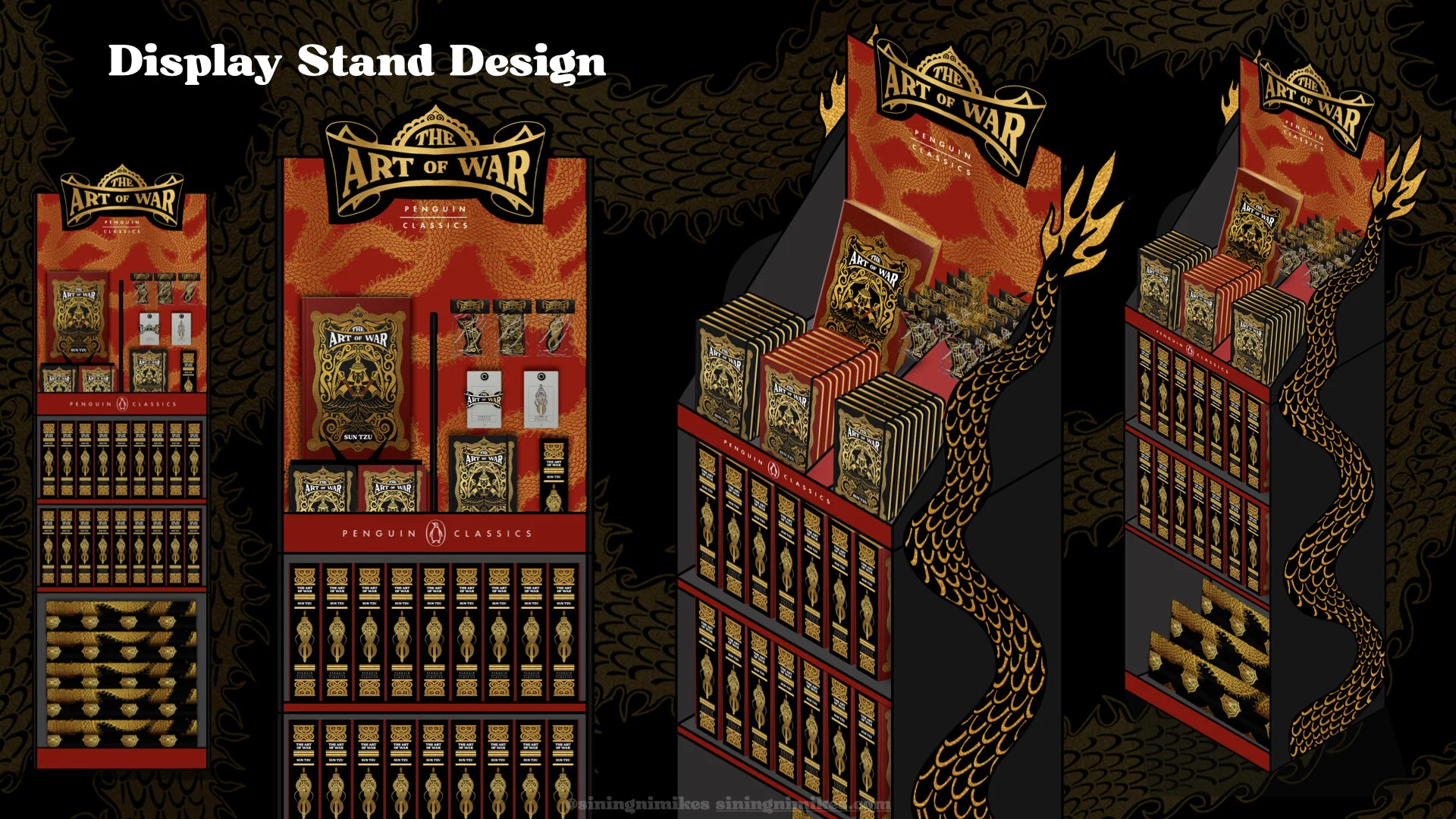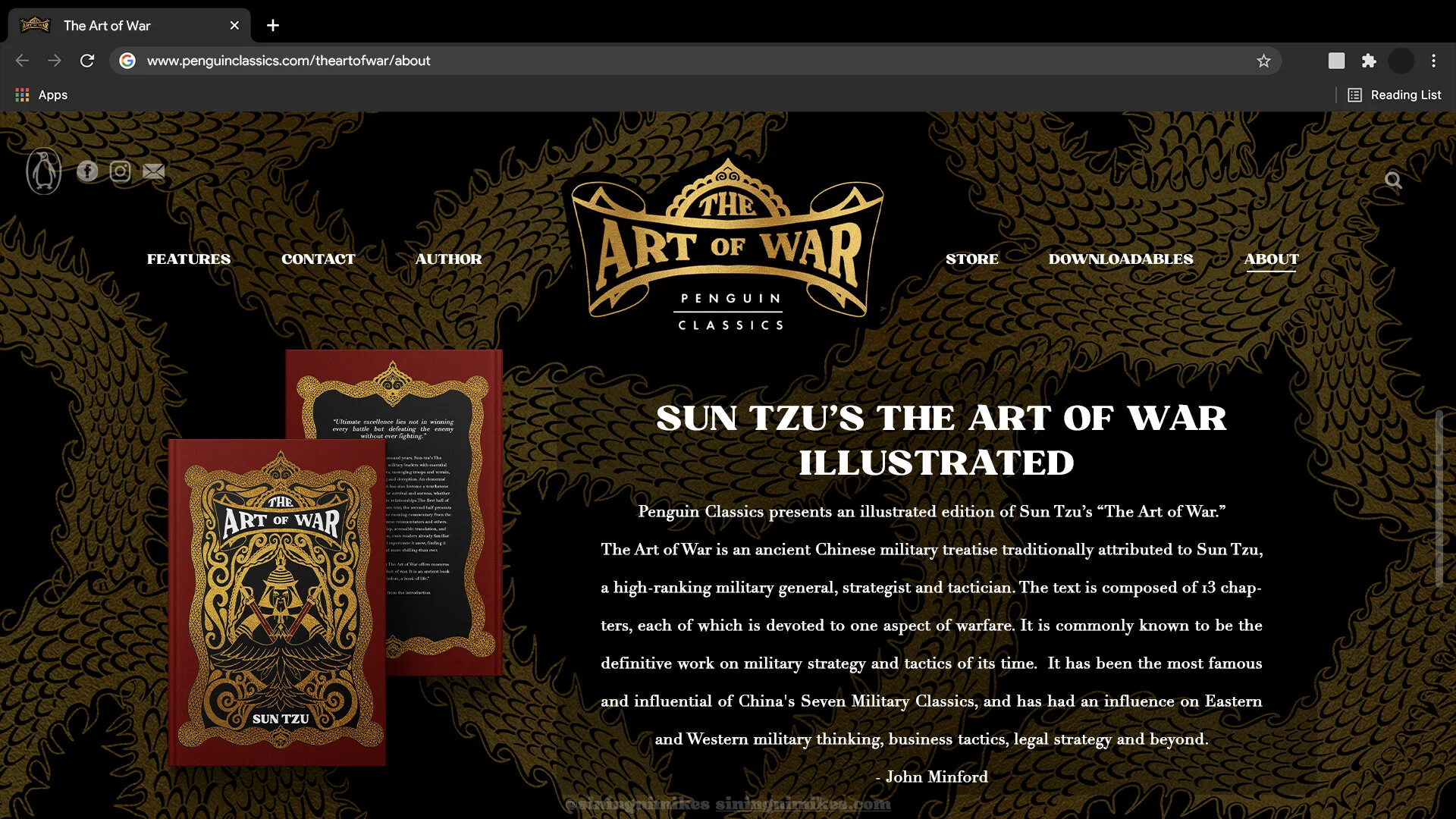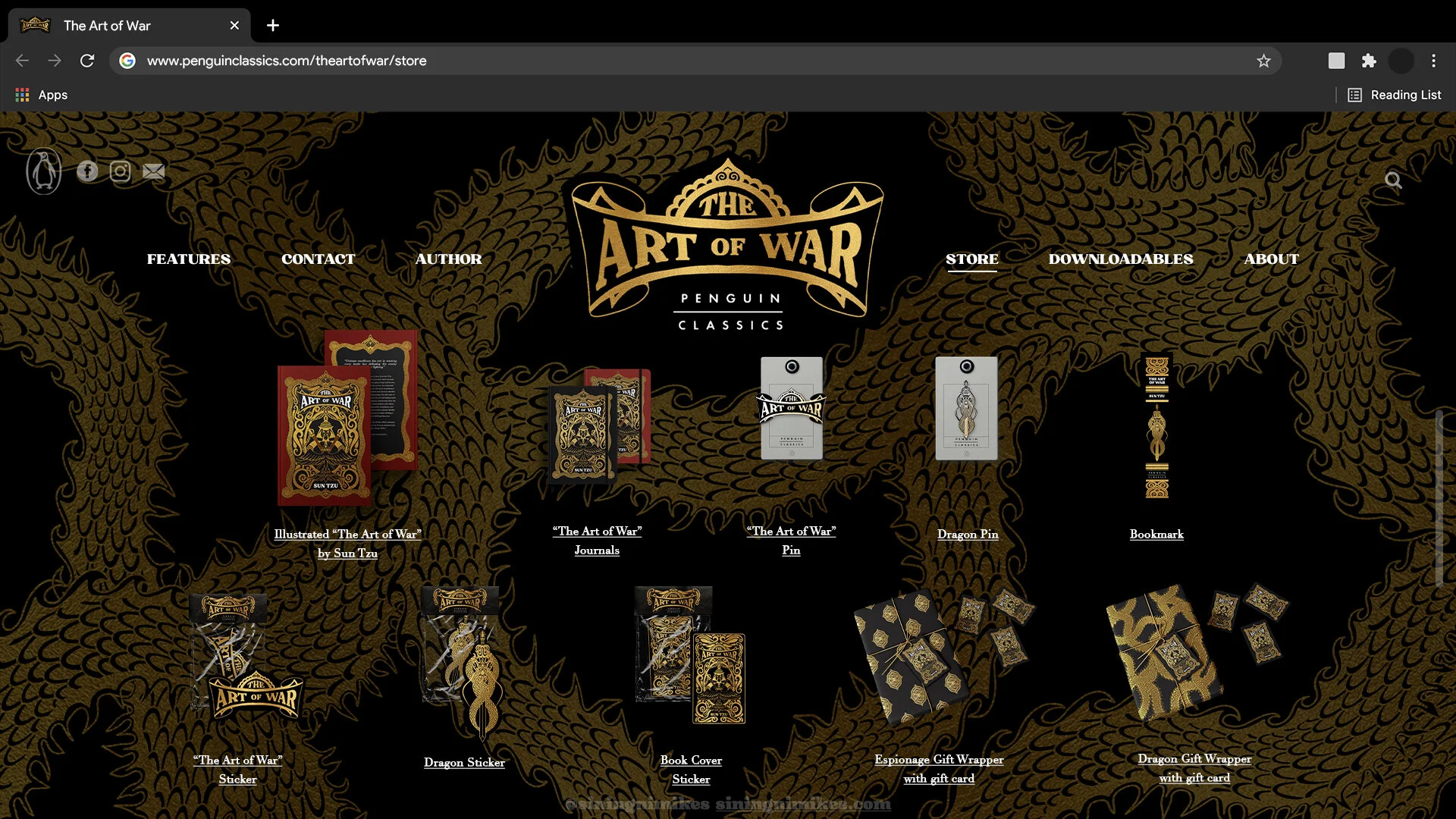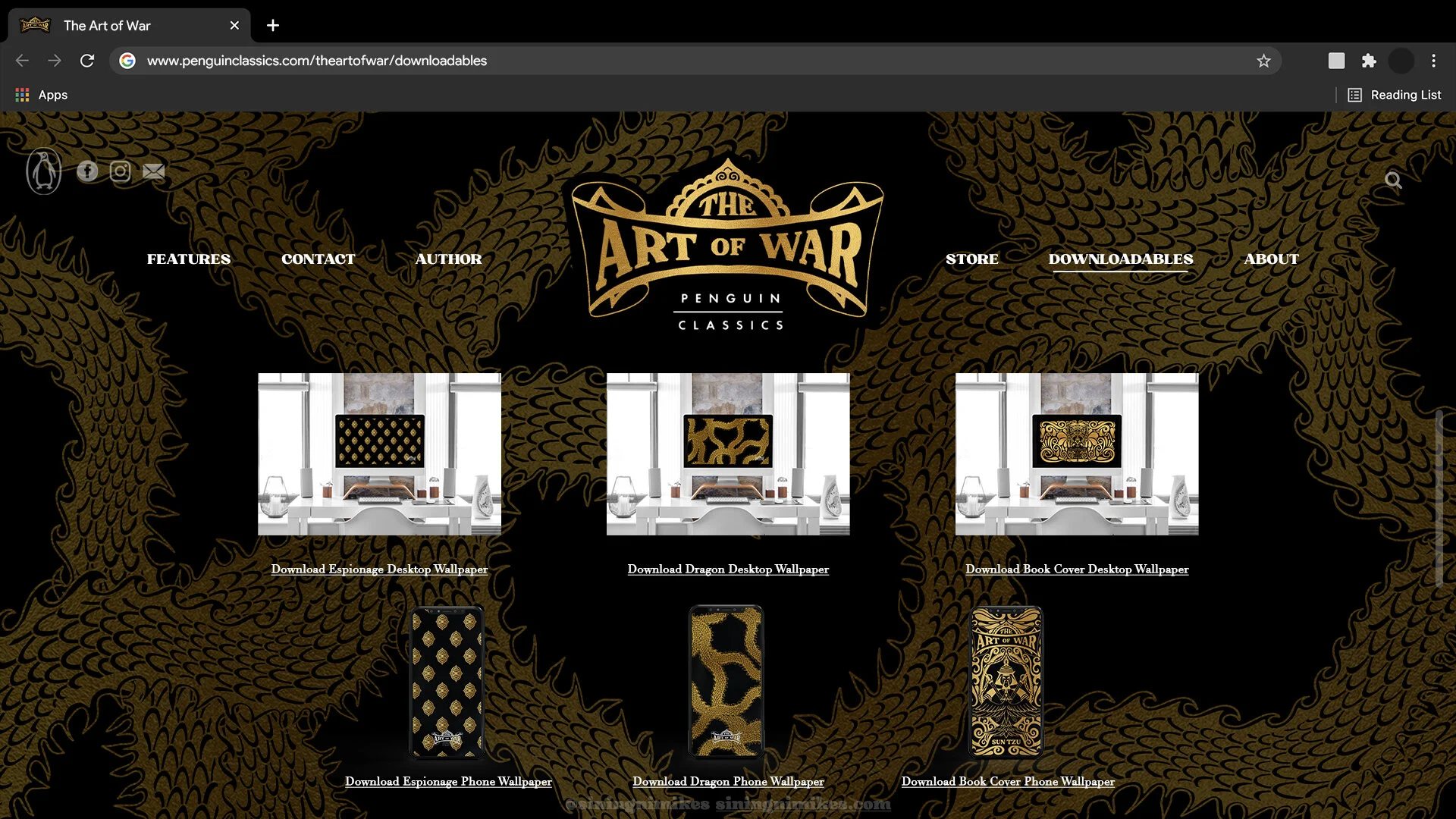Illustrating and Redesigning “The Art of War” by Sun Tzu
I just wanted to share my thesis entitled “Illustrating and Redesigning Penguin Classics The Art of War by Sun Tzu”
Disclaimer: I don’t own any of the Literary Content that is shown in this post. I only own the illustrations and designs. Also, this post does not contain the full version of my research and campaign, it only contains the illustrations that I drew and some of the designs I made.
Other info about the book:
Book Title: “The Art of War” by Sun Tzu (Version of Penguin Classics)
Edited, Translated and Introduction by: John Minford
Published by: Penguin Group
Genre: Nonfiction Philosophical Adult book
Brief Background about Sun Tzu’s “The Art of War”:
Sun Tzu’s “The Art of War” is the oldest military treatise in the world
Its relevance influenced modern society generals, business leaders, politicians, and sports coaches today.
This book has been recommended to leaders and entrepreneurs worldwide and has been a widespread general guide on strategy.
About the illustrations:
The dragon is a consistent element in all of the illustrations and designs, for it represents power and strength, qualities of what a leader, a general and an army should have.
The colors red and black are also used in all of the illustrations for it represents life and death, survival and extinction, victory and defeat, retreat and attack, and the two grave affairs of a state, ritual and war.
The duality of these elements represents Tai Chi, the balance of yin and yang, the balance of life itself. Sun Tzu’s “The Art of War” teaches the importance of balance in life and how to defeat war and know success.
Since the literary components of this book are not a narrative exposition, the historical and cultural elements are the ones that are interpreted. And because of the poetic form of literature Penguin Classics’ “The Art of War” has, an abstract style of rendering, such as allegories and pictographs is applied for the illustrations and designs.
The ambiguous style of illustration allows the reader to have their own interpretations, inspired by Sun Tzu’s words of “there are no constant strategies to war, it always depends on the situation, the terrain, and the enemy”, from Chapter 6 Empty and Full.
The visuals of the book cover is designed to be sophisticated with the gold details and shade of dark red and black. The illustrations on the front cover represent the significant elements of the contents of the book. The dragon wrapped around the sword symbolizes the power of war and the art of war itself.
The elements on the end-sheets design came from Chapter 13 of the book entitled, “Espionage”. Sun Tzu stated that the use of spies are the key element in warfare, thus, signifying its importance to the literature.
Chapter 1: Making of Plans
There are 5 things Sun Tzu has emphasized in chapter 1, The Way, Heaven, Earth, Command and Discipline.
The way means Tao/ Moral Law/ Ruler represented by the general or emperor in the middle.
Command and Discipline is represented by The ruler that has a “Palm Hold Fist” salute, this is an etiquette of martial arts practiced in Tai Chi as the left palm signifies civilization, morality, intelligence and physical fitness and the right fist signifies martial arts. Both of which are qualities of what an army and a leader should have.
Heaven is represented by The Tai Chi symbol at the background which symbolizes the duality and the balance of yin and yang
Earth is symbolized by the bamboo trees in the background, bamboos were used as calculating devices to observe the terrain before war.
Chapter 2: Waging of War
waging of war means getting ready for war with Weapons and armors
Chapter 3: Strategic Offensive
Strategic offensive means psychological warfare with intimidation and defeating the enemy through strategy not siege.
The strategy is to know your equal, represented by the symmetry of the generals.
The symmetry also represents the organization of the troops, if there is no organization there would be chaos.
Chapter 4: Forms and Dispositions
the Feng Shui Bagua is the traditional language of Chinese Geomancy, symbolizing the forms, shapes and appearance of the army.
Chapter 5: Potential Energy
Sun Tzu stated that when you marshal men you use gongs
The phoenix and the dragon represents the ultimate yin and yang the perfect Feng Shui
The two crossed swords mean self preservation in war.
Chapter 6: Empty and Full
The sword that is masked by the 2 dragons represents showing victory while tactics are hidden
The 2 symmetrical dragons represents Empty (the yin) and Full (the yang)
Chapter 7: The Fray
the fray means “the fight” or “the war”
Elements from chapters 1 to 6 are considered in chapter 7
Chapter 8: The Nine Changes
these are the nine changes in terrain
it shows the different types of terrain that the troops will encounter, like mountains, rivers, valleys, and the forests
Chapter 9: On the March
Sun Tzu advised when in war, the army must be close to valleys but not inside the valleys themselves
the army represents the troops marching to war
and the smoke represents the army’s presence
Chapter 10: Forms of Terrain
the map shows the different forms of terrain that the army should be knowledgeable of.
it is the general’s duty to study the terrain
The compass symbolizes projection and the right judgement of the general
Chapter 11: The Nine Kinds of Ground
shows the meter of how safe the terrain is
The top most represents home base, followed by light ground with easy retreat represented by the sun, then strategic ground that is worth struggling for represented by the swords, then open ground that is represented by network of roads, then cross roads represented by intersecting ground for nations, then heavy ground represented by sharp pointy triangles symbolizes heavy ground and enemy territory, then intractable ground represented by water meaning the ground is not solid and hard to fight on, then enclosed ground narrow twisting paths, and death ground represented by fire.
Chapter 12: Attack by fire
chapter 12’s contents show the ways to attack by fire
the dragon represents power and strength, as well as the fire itself represents the power it holds and its innate strength.
Chapter 13: Espionage
espionage means spying
Sun Tzu stated that the key element in warfare is by the use of spies.
The eyes represent the spies lurking and their deceit is represented by the hypnotizing gaze
Page Illustrations:
The illustrations represent the contents of the chapter that they interpret, with the use of symbols and icons to increase its visual literacy.
Page number design:
The dragon elements represent power and strength
Collaterals:
Desktop and Phone Wallpapers
The desktop and phone wallpapers are from the elements in the books, the espionage design was also the design from the end sheets of the book, the dragon design is from the illustrations, the book cover design from the front of the book.
Collaterals:
Bookmark design and Journals
The Bookmark design is the spine of the book, making it interactive.
Collaterals:
Gift Wrappers with gift cards
Collaterals:
pin and sticker designs
These pin and sticker designs represent the sophistication and prestige quality of the book, with its black and gold lining.
Display Stand Design: (Theoretical for the campaign of this thesis)
The display stand showcases the book itself and consists of all the collaterals, such as the stickers, bookmarks, journals, pins and gift wrappers along with its gift cards.
With the use of red, black and the gold accents, the display stand emphasizes on the elements of the book such as the dragon tail detail on the sides.
The products are also placed in a way to be seen and be accessed easily.
Website Designs:
For the website, All of its visuals have a consistent design so it is easier for people to remember the product, for this is where people would most likely check for information about the product and its collaterals.
Website Designs:
it is important that the store is easy to use and understand for the consumers’ customer experience. (Theoretical for the campaign of this thesis)
Website Designs:
All of the downloadable wallpapers are free and can be easily downloaded by the consumer, this is strategically done to increase consumer loyalty. (Theoretical for the campaign of this thesis)

